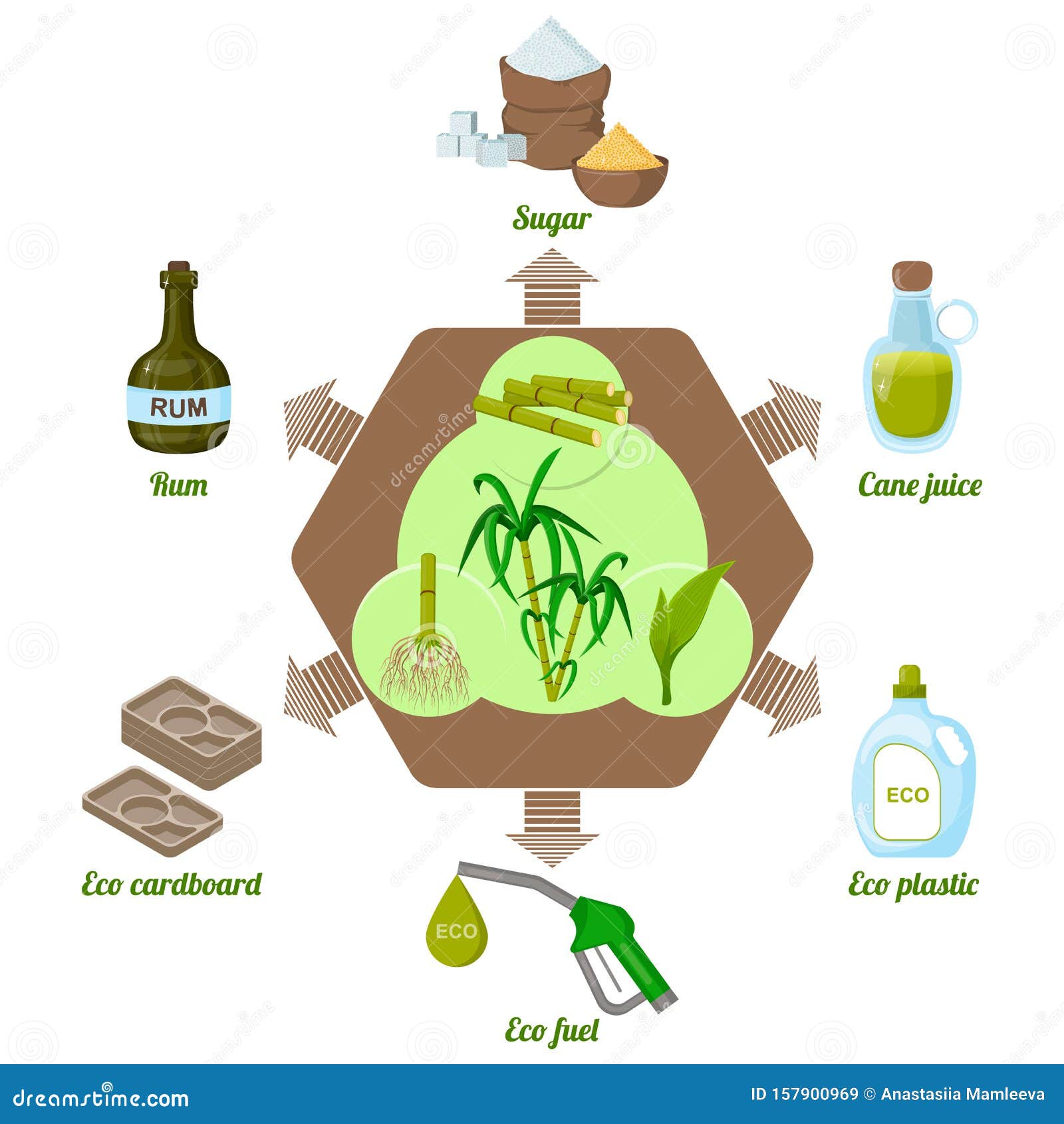What’s Next for sugar cane products in Consumer Demand
A Deep Dive Into Sugar Cane: Insights on Production, Supplies, and Product Development
Sugar cane plays an important role in farming, underpinning economic situations in exotic areas. Its cultivation involves elaborate processes influenced by numerous environmental elements. Cultivators encounter substantial challenges, including climate adjustment and market variations. Technologies in product development are emerging in response to advancing consumer demands. Recognizing these dynamics is vital for comprehending the future of this important plant and its influence on worldwide markets. What lies in advance for sugar cane and its myriad applications?
The Value of Sugar Cane in Global Agriculture
Sugar cane functions as an important plant in international farming, underpinning economic climates and food systems in many exotic regions. This functional plant is largely cultivated for its high sucrose web content, which is improved into sugar, an essential component in many foodstuff. Beyond sweetening, sugar cane is additionally important for producing biofuels, specifically ethanol, adding to energy sustainability.The financial value of sugar cane extends to employment, providing resources for countless farmers and employees in processing facilities. In several nations, sugar cane cultivation and handling represent considerable portions of agricultural GDP, influencing trade equilibriums and regional development.Additionally, sugar cane's versatility to various climates enhances its importance as a plant, ensuring regular supply in international markets. Its byproducts, including molasses and bagasse, better diversify its energy, making it a vital part in food, energy, and market. On the whole, sugar cane remains a foundation of agricultural productivity worldwide.
Cultivation Procedures: From Planting to Harvest
Growing sugar cane entails a collection of distinct procedures that guarantee optimal development and yield. The farming begins with land preparation, where the soil is tilled to safeguard ideal aeration and drainage. Following this, seed cane, which contains mature stalks, is chosen and cut into segments (sugar cane products). These sections are then planted in furrows, making certain correct spacing to enable sunlight and nutrient access.Once grown, irrigation systems are employed to maintain ample moisture degrees, as sugar cane thrives in humid conditions. Weeding and parasite administration are essential throughout the growing duration to reduce competition for sources. Nutrient application, consisting of plant foods, supports durable growth. As the plants develop, keeping track of for conditions and pests continues.Harvesting commonly takes place 10 to 24 months post-planting, relying on the range. The walking sticks are cut short, guaranteeing marginal waste, and are promptly transferred for refining to preserve sugar quality
Geographical Circulation of Sugar Cane Production
The geographical circulation of sugar cane production is greatly formed by particular environment and soil demands. Major creating nations, such as Brazil, India, and China, take advantage of tropical and subtropical climates that sustain the crop's growth. Comprehending these elements provides understanding right into the global landscape of sugar cane cultivation.
Major Making Countries
Although sugar cane is grown in numerous regions worldwide, particular nations dominate production as a result of positive climates and agricultural practices. Brazil leads the worldwide market, accounting for about one-third of overall production, thanks to its comprehensive haciendas and advanced farming methods. India adheres to as a substantial manufacturer, profiting from both beneficial climate condition and a big domestic market. China and Thailand additionally place among the top manufacturers, with reputable frameworks supporting their sugar markets. Other significant factors include the USA, Mexico, and Australia, each leveraging their one-of-a-kind agricultural systems to enhance result. These nations play an important duty in the sugar cane supply chain, affecting worldwide prices and accessibility
Climate and Soil Needs
Suitable environment and dirt problems are vital for successful sugar cane production. Sugar cane prospers in exotic and subtropical regions, needing warm temperature levels between 20 ° C and 30 ° C (68 ° F to 86 ° F) These plants require bountiful sunlight and rains, preferably between 1,500 to 2,500 millimeters every year, to assure peak development. The dirt needs to be well-drained, productive, and rich in natural matter, with a pH level preferably between 5.5 and 8.5. Sandy loam or clay loam dirts are especially conducive to sugar cane growing, supplying needed nutrients and drainage. Geographic distribution is mostly influenced by these factors, with major production locations situated in Brazil, India, and China, where environmental conditions straighten with the plant's demands for growth and return.

Obstacles Faced by Sugar Cane Growers
Sugar cane growers come across considerable obstacles that influence their incomes. Environment change introduces unforeseeable weather condition patterns, affecting crop return and quality. Additionally, market cost volatility develops economic unpredictability, making complex long-term preparation for these agricultural producers.
Environment Change Impacts

Just how do climate modification impacts affect the practicality of sugar cane farming? Rising temperature levels and irregular weather patterns especially challenge sugar cane growers. Increased warmth can bring about minimized yields, as the plants struggle to flourish in severe conditions. In addition, modified rains patterns lead to either dry spells or extreme flooding, both destructive to plant wellness. Insects and conditions are likely to proliferate in warmer environments, better harmful production. In addition, soil deterioration and salinization as a result of increasing sea degrees can lessen cultivatable land. These weather adjustments oblige cultivators to adjust their practices, often calling for financial investment in brand-new innovations and resistant plant ranges. Ultimately, the sustainability of sugar cane farming rests on dealing with these climate tests successfully.

Market Value Volatility
Market value volatility presents significant obstacles for sugar cane growers, impacting their monetary stability and preparation. Fluctuations in market costs, driven by factors such as worldwide supply and demand, climate condition, and government policies, produce uncertainty for producers. This changability makes it challenging for farmers to forecast incomes and take care of business expenses properly. In addition, when prices go down all of a sudden, many farmers may struggle to cover production costs, causing possible monetary distress. To minimize these threats, some cultivators turn to agreements or hedging strategies, yet these options might not come to all. Market rate volatility remains a consistent problem, affecting the total sustainability and profitability of sugar cane farming.
Comprehending the Sugar Cane Supply Chain

Market Fads Influencing Sugar Cane Prices
The characteristics of sugar cane costs are influenced by a variety of market patterns that mirror broader economic problems and customer habits. Worldwide demand for sugar and sugar-related items plays an essential role, with enhancing passion in organic and sustainably sourced items driving costs higher. In addition, fluctuations in oil prices influence the price of production and transportation, more influencing market prices. Weather patterns are another significant factor; damaging conditions can bring about lowered yields and boosted rates. Profession policies, tolls, and international contracts additionally shape the market landscape, impacting supply chains and schedule. my link Currency exchange rates can make complex global profession, impacting prices for both merchants and importers. Ultimately, shifts in customer preferences toward much healthier options may alter need patterns, developing a causal sequence on sugar cane pricing. For that reason, comprehending these interconnected patterns is vital for stakeholders in the sugar sector
Innovations in Sugar Cane Product Advancement
Various developments in sugar cane item development are reshaping the sector and increasing its applications. Researchers are exploring different uses past standard sugar, including biofuels, eco-friendly plastics, and health and wellness supplements. Breakthroughs in chemical handling techniques have actually boosted the removal of important compounds such as anti-oxidants and vitamins from sugar cane, advertising its usage in useful foods.Additionally, the advancement of genetically customized sugar cane ranges intends to boost return and resistance to bugs, while likewise enhancing the nutritional account of the plant. Innovations in fermentation procedures have brought about the production of high-quality alcoholic drinks obtained from sugar cane, attracting an expanding market for craft spirits.Moreover, sustainable methods in cultivation and processing are acquiring traction, with a concentrate on decreasing environmental effects. These improvements not only produce brand-new market chances yet likewise cultivate an even more lasting strategy to sugar cane production, lining up with international fads in the direction of green products.
Frequently Asked Inquiries
What Are the Environmental Influences of Sugar Cane Farming?
The ecological effects of sugar cane farming consist he said of deforestation, loss of biodiversity, water air pollution from plant foods and pesticides, soil destruction, and greenhouse gas discharges, every one of which substantially add to environmental discrepancies and climate change.
Exactly How Does Sugar Cane Growing Affect Resident Economies?
Sugar cane cultivation substantially affects neighborhood economies by producing jobs, stimulating agricultural industries, and creating income for farmers. However, it can additionally result in economic dependency and changes based upon market demands and ecological conditions.
What Are the Key Vermin and Diseases Affecting Sugar Cane?
The major pests affecting sugar cane consist of the sugarcane borer and aphids. Illness such as red rot and smut greatly impact return. Farmers should carry out incorporated bug administration methods to minimize these risks efficiently.
Exactly How Is Sugar Cane Processed Into Different Products?
Sugar cane handling includes crushing the stalks to extract juice, adhered to by information, evaporation, and crystallization. This process returns raw sugar, molasses, and ethanol, each offering unique why not try this out functions in various markets, from food to power.
What Are the Nutritional Aspects of Sugar Cane?
The nutritional facets of sugar cane include important minerals and vitamins, especially B vitamins, calcium, and iron. It also has fiber, though largely made up of sucrose, which provides power yet does not have substantial nutrients.